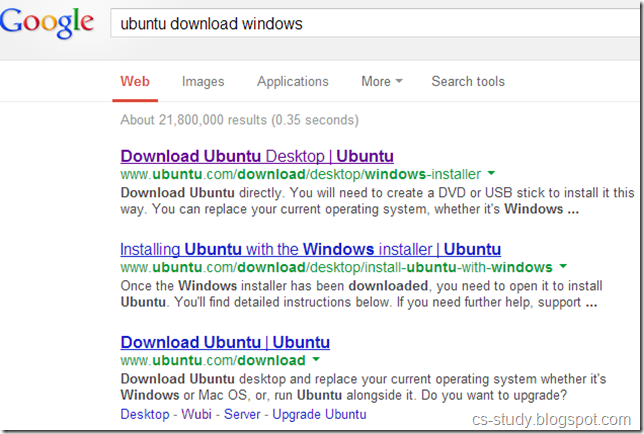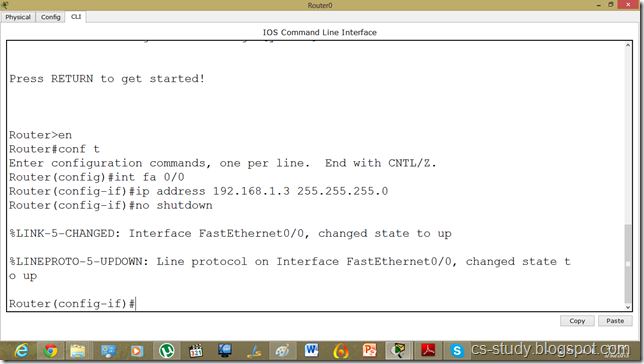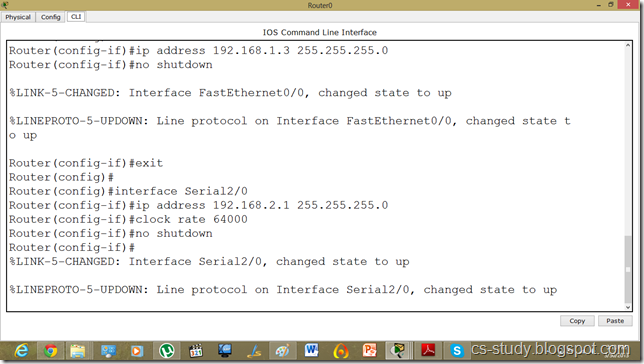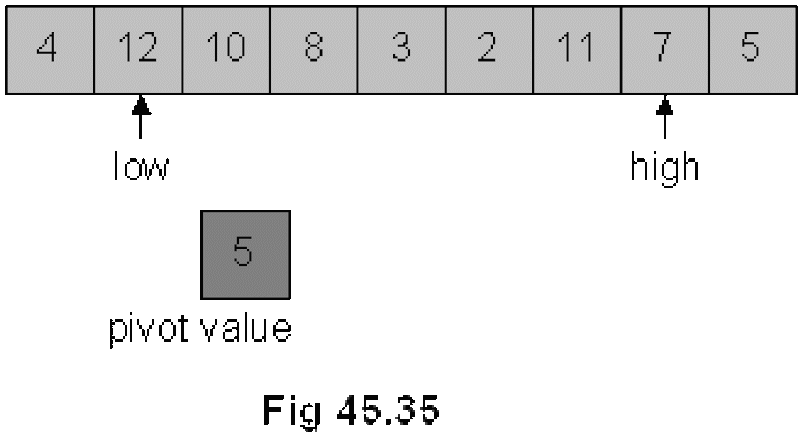September 25, 2013
September 9, 2013
C Program Phases Writing And Executing A Program
System Software
The system software controls the computer. It communicates with computer’s hardware (key board, mouse, modem, sound card etc) and controls different aspects of operations. Sub categories of system software are:
The system software controls the computer. It communicates with computer’s hardware (key board, mouse, modem, sound card etc) and controls different aspects of operations. Sub categories of system software are:
- Operating system
- Device drivers
- Utilities
Operating system
An operating system (sometimes abbreviated as "OS") is the program that manages all the other programs in a computer. It is a integrated collection of routines that service the sequencing and processing of programs by a computer. Note: An operating system may provide many services, such as resource allocation, scheduling, input/output control, and data management.
Device drivers
The device driver software is used to communicate between the devices and the computer. We have monitor, keyboard and mouse attached to almost all PC’s; if we look at the properties of these devices we will see that the operating system has installed special software to control these devices. This piece of software is called device driver software. When we attach a new device with the computer, we need software to communicate with this device. These kinds of software are known as device drivers e.g. CD Rom driver, Sound Card driver and Modem driver. Normally manufacturer of the device provide the device driver software with the device. For scanners to work properly with the computers we install the device driver of the scanner. Nowadays if you have seen a scanner, it comes with TWAIN Drivers. TWAIN stands for Technology Without An Interesting Name.
September 4, 2013
Installation of Dev C++
Here is the step by step procedure for the installation of Dev C++
First, download the Dev C++ from the following link.
http://sourceforge.net/projects/orwelldevcpp/files/latest/download
Then after download execute the setup. The screenshots are of different versions.
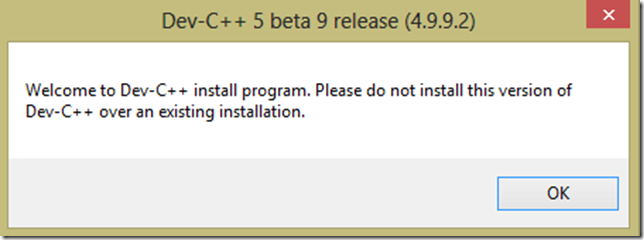
Select Language.
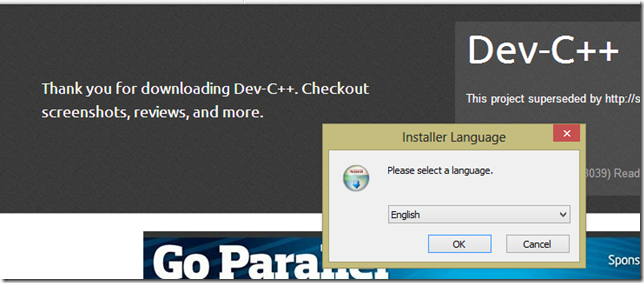
Click I agree.
September 3, 2013
Introduction to Programming
Definition
"A program is a precise sequence of steps to solve a particular problem.”It means that when we say that we have a program, it actually means that we know about a complete set activities to be performed in a particular order. The purpose of these activities is to solve a given problem. Alan Perlis, a professor at Yale University, says:"It goes against the grain of modern education to teach children to program. What fun is there in making plans, acquiring discipline in organizing thoughts, devoting attention to detail and learning to be self-critical? ". It is a sarcastic statement about modern education, and it means that the modern education is not developing critical skills like planning, organizing and paying attention to detail. Practically, in our day to day lives we are constantly planning, organizing and paying attention to fine details (if we want our plans to succeed). And it is also fun to do these activities. For example, for a picnic trip we plan where to go, what to wear, what to take for lunch, organize travel details and have a good time while doing so.
"A program is a precise sequence of steps to solve a particular problem.”It means that when we say that we have a program, it actually means that we know about a complete set activities to be performed in a particular order. The purpose of these activities is to solve a given problem. Alan Perlis, a professor at Yale University, says:"It goes against the grain of modern education to teach children to program. What fun is there in making plans, acquiring discipline in organizing thoughts, devoting attention to detail and learning to be self-critical? ". It is a sarcastic statement about modern education, and it means that the modern education is not developing critical skills like planning, organizing and paying attention to detail. Practically, in our day to day lives we are constantly planning, organizing and paying attention to fine details (if we want our plans to succeed). And it is also fun to do these activities. For example, for a picnic trip we plan where to go, what to wear, what to take for lunch, organize travel details and have a good time while doing so.
May 27, 2013
Xgraph in NS2
One part of the ns-allinone package is 'xgraph', a plotting program which can be used to create graphic representations of simulation results. In this section, I will show you a simple way how you can create output files in your Tcl scripts which can be used as data sets for xgraph. On the way there, I will also show you how to use traffic generators.
A note: The technique I present here is one of many possible ways to create output files suitable for xgraph. If you think there is a technique which is superior in terms of understandablity (which is what I aim for in this tutorial), please let me know.
First of all, we create the following topology:

The following piece of code should look familiar to you by now if you read the first sections of this tutorial.
set n0 [$ns node] set n1 [$ns node] set n2 [$ns node] set n3 [$ns node] set n4 [$ns node] $ns duplex-link $n0 $n3 1Mb 100ms DropTail $ns duplex-link $n1 $n3 1Mb 100ms DropTail $ns duplex-link $n2 $n3 1Mb 100ms DropTail $ns duplex-link $n3 $n4 1Mb 100ms DropTail
May 22, 2013
NS2 installation using Ubuntu Software Center
There is an absolute easy way to install ns2 (network simulator) by using the easiest technique available on ubuntu.
Let us install ns2 in a very nice and easy way. Ubuntu Software Center provides with ease to install different softwares by wizard.
Let us install ns2 in a very nice and easy way. Ubuntu Software Center provides with ease to install different softwares by wizard.
Here is how it is done.
Open “Ubuntu Software Center” as hightlighted in the below figure.
Now, in the search box on the top right corner. Write ns2 and press enter.
You will see the package. Hit install button and it will install ns2. Ofcourse, internet connectivity is must :)
Similarly, you can install nam(network animator) by following the same procedure. Just enter "nam" in the search box and hit enter.
Install the first package that you see. And there you go, you have installed ns2 and nam . You can always install it using terminal simply by writing the following command.
sudo apt-get install ns2 nam xgraph Remember, when you do the same in Ubuntu 13.04, it will not show you the desired ns2 package. And you will have to install it manually. I guess this is only available for 12.04 version. So, there is another way available if you want to install ns2 in that version.
This could be resolved by applying the following command.
sudo apt-get update When the update is completed, go and run the command to install ns2 , nam and xgraph. If you want an easy way out to install Ubuntu using windows. Please click here.
May 21, 2013
Dynamic Nodes generation and traffic flow in ns2
Here is the code for dynamically creating nodes and create traffic flow dynamically using protocol.
#Create a simulator object
set ns [new Simulator]
#Tell the simulator to use dynamic routing
$ns rtproto DV
#Open the nam trace file
set nf [open out.nam w]
$ns namtrace-all $nf
#Define a 'finish' procedure
proc finish {} {
global ns nf
$ns flush-trace
#Close the trace file
close $nf
#Execute nam on the trace file
exec nam out.nam &
exit 0
}
#Create seven nodes
for {set i 0} {$i < 7} {incr i} {
set n($i) [$ns node]
}
#Create links between the nodes
for {set i 0} {$i < 7} {incr i} {
$ns duplex-link $n($i) $n([expr ($i+1)%7]) 1Mb 10ms DropTail
}
#Create a UDP agent and attach it to node n(0)
set udp0 [new Agent/UDP]
$ns attach-agent $n(0) $udp0
# Create a CBR traffic source and attach it to udp0
set cbr0 [new Application/Traffic/CBR]
$cbr0 set packetSize_ 500
$cbr0 set interval_ 0.005
$cbr0 attach-agent $udp0
#Create a simulator object
set ns [new Simulator]
#Tell the simulator to use dynamic routing
$ns rtproto DV
#Open the nam trace file
set nf [open out.nam w]
$ns namtrace-all $nf
#Define a 'finish' procedure
proc finish {} {
global ns nf
$ns flush-trace
#Close the trace file
close $nf
#Execute nam on the trace file
exec nam out.nam &
exit 0
}
#Create seven nodes
for {set i 0} {$i < 7} {incr i} {
set n($i) [$ns node]
}
#Create links between the nodes
for {set i 0} {$i < 7} {incr i} {
$ns duplex-link $n($i) $n([expr ($i+1)%7]) 1Mb 10ms DropTail
}
#Create a UDP agent and attach it to node n(0)
set udp0 [new Agent/UDP]
$ns attach-agent $n(0) $udp0
# Create a CBR traffic source and attach it to udp0
set cbr0 [new Application/Traffic/CBR]
$cbr0 set packetSize_ 500
$cbr0 set interval_ 0.005
$cbr0 attach-agent $udp0
April 16, 2013
EVIL IS NOTHING BUT ABSENCE OF GOOD
Professor : You are a Muslim, aren’t you, son ?
Student : Yes, sir.
Professor: So, you believe in GOD ?
Student : Absolutely, sir.
Professor : Is GOD good ?
Student : Sure.
Professor: Is GOD all powerful ?
Student : Yes.
Student : Yes, sir.
Professor: So, you believe in GOD ?
Student : Absolutely, sir.
Professor : Is GOD good ?
Student : Sure.
Professor: Is GOD all powerful ?
Student : Yes.
March 31, 2013
March 28, 2013
Lab Manual Of Computer Communication and Networks
30 Wireless Communication in NS2
December 26, 2012
Quick Sort
Quicksort is another divide and conquer algorithm. Quicksort is based on the idea of partitioning (splitting) the list around a pivot or split value. Quicksort is also a divide and conquer algorithm. We see pictorially, how the quick sort algorithm works. Suppose we have an array as shown in the figure Fig 45.33.
We select an element from the array and call it the pivot. In this array, the pivot is the middle element 5 of the array. Now, we swap this with the last element 3 of the array. The updated figure of the array is shown in Fig 45.34.
As shown in Fig 45.34, we used two indexes low and high. The index low is started from 0th position of the array and goes towards right until n-1th position. Inside this loop, an element that is bigger than the pivot is searched. The low index is incremented further as 4 is less than 5.
low is pointing to element 12 and it is stopped here as 12 is greater than 5. Now, we start from the other end, the high index is moved towards left from n-1th position to 0. While coming from right to left, we search such an element that is smaller than 5. Elements 7 and 11 towards left are greater than 5, therefore, the high pointer is advanced further towards left. high index is stopped at the next position as next element 2 is smaller than 5. Following figure Fig 45.36 depicts the latest situation.
Divide and Conquer
We had started discussing three new sorting algorithms; merge sort, quick sort and heap sort. All of these three algorithms take time proportional to nlog2n. Our elementary three sorting algorithms were taking n2 time; therefore, these new algorithms with nlog2n time are faster. In search operation, we were trying to reduce the time from n to log2n.
Let’s discuss these sorting algorithms; merge sort, quick sort and heap sort in detail.
We had started our discussion from divide and conquer rule where we also saw an example. Instead of sorting a whole array, we will divide it in two parts, each part is sorted separately and then they are merged into a single array.
Let’ see few analysis to confirm the usefulness of the divide and conquer technique.
- To sort the halves approximate time is (n/2)2+(n/2)2
- To merge the two halves approximate time is n
- So, for n=100, divide and conquer takes approximately:
= (100/2)2 + (100/2)2 + 100
= 2500 + 2500 + 100
= 5100 (n2 = 10,000)
Comparison of Complexity of Algorithms
We have studied these three algorithms i.e. selection sort, insertion sort and bubble sort. Now considering the above three algorithms, we see that these algorithms are easy to understand. Coding for these algorithms is also easy. These three algorithms are in place algorithms. There is no need of extra storage for sorting an array by these algorithms. With respect to the time complexity, these algorithms are proportional to N2. Here N is the number of elements. So we can see that as the value of N increases, the performance time of these algorithms increases considerably as it is proportional to N2. Thus these algorithms are expensive with respect to time performance. There are algorithms that have the time complexity proportional to N log2 (N). The following table shows the respective values of N2 and N log2(N) for some values of N.
| N | N2 | N Log2 (N) |
| 10 | 100 | 33.21 |
| 100 | 10000 | 664.38 |
| 1000 | 1000000 | 9965.78 |
| 10000 | 100000000 | 132877.12 |
| 100000 | 10000000000 | 1660964.04 |
| 1000000 | 1E+12 | 19931568.57 |
From this table we can see that for a particular value of N, the value of N2 is very large as compared to the value of N log2 (N). Thus we see that the algorithms whose time complexity is proportional to N2 are much time consuming as compared to the algorithms the time complexity of which is proportional to N log2 (N). Thus we see that the N log2 (N) algorithms are better than the N2 algorithms.
N log2 (N) Algorithms
Now let’s see the algorithms that are N log2 (N) algorithms. These include the following algorithms.
- Merge Sort
- Quick Sort
- Heap Sort
These three algorithms fall under ‘divide and conquer category’. The divide and conquer strategy is well known in wars. The philosophy of this strategy is ,’ divide your enemy into parts and then conquer these parts’. To conquer these parts is easy, as these parts cannot resist or react like a big united enemy. The same philosophy is applied in the above algorithms. To understand the divide and conquer strategy in sorting algorithm, let’s consider an example. Suppose we have an unsorted array of numbers is given below.
Bubble Sort
The third sorting algorithm is bubble sort. The basic idea of this algorithm is that we bring the smaller elements upward in the array step by step and as a result, the larger elements go downward. If we think about array as a vertical one, we do bubble sort. The smaller elements come upward and the larger elements go downward in the array. Thus it seems a bubbling phenomenon. Due to this bubbling nature, this is called the bubble sort. Thus the basic idea is that the lighter bubbles (smaller numbers) rise to the top. This is for the sorting in ascending order. We can do this in the reverse order for the descending order.
The steps in the bubble sort can be described as below
• Exchange neighboring items until the largest item reaches the end of the array
• Repeat the above step for the rest of the array
In this sort algorithm, we do not search the array for the smallest number like in the other two algorithms. Also we do not insert the element by shifting the other elements. In this algorithm, we do pair-wise swapping. We will take first the elements and swap the smaller with the larger number. Then we do the swap between the next pair. By repeating this process, the larger number will be going to the end of the array and smaller elements come to the start of the array.
Insertion Sort
The main idea of insertion sort is
• Start by considering the first two elements of the array data. If found out of order, swap them
• Consider the third element; insert it into the proper position among the first three elements.
• Consider the fourth element; insert it into the proper position among the first four elements.
• … …
This algorithm is not something uncommon to the persons who know card playing. In the game of cards, a player gets 13 cards. He keeps them in the sorted order in his hand for his ease. A player looks at the first two cards, sorts them and keeps the smaller card first and then the second. Suppose that two cards were 9 and 8, the player swap them and keep 8 before 9. Now he takes the third card. Suppose, it is 10, then it is in its position. If this card is of number 2, the player will pick it up and put it on the start of the cards. Then he looks at the fourth card and inserts it in the first three cards (that he has sorted) at a proper place. He repeats the same process with all the cards and finally gets the cards in a sorted order. Thus in this algorithm, we keep the left part of the array sorted and take element from the right and insert it in the left part at its proper place. Due to this process of insertion, it is called insertion sorting.
Subscribe to:
Posts (Atom)
C program to Read From a File
#include <stdio.h> #include <stdlib.h> void main() { FILE *fptr; char filename[15]; char ch; ...
-
A terminal emulation program for TCP/IP networks such as the Internet. The Telnet program runs on your computer and connects your PC to a ...
-
Voice over IP (VoIP, or voice over Internet Protocol) commonly refers to the communication protocols, technologies, methodologies, and tra...
-
Star Formations http://cs-study.blogspot.com/2013/10/c-program-to-print-different-star.html Hollow...
